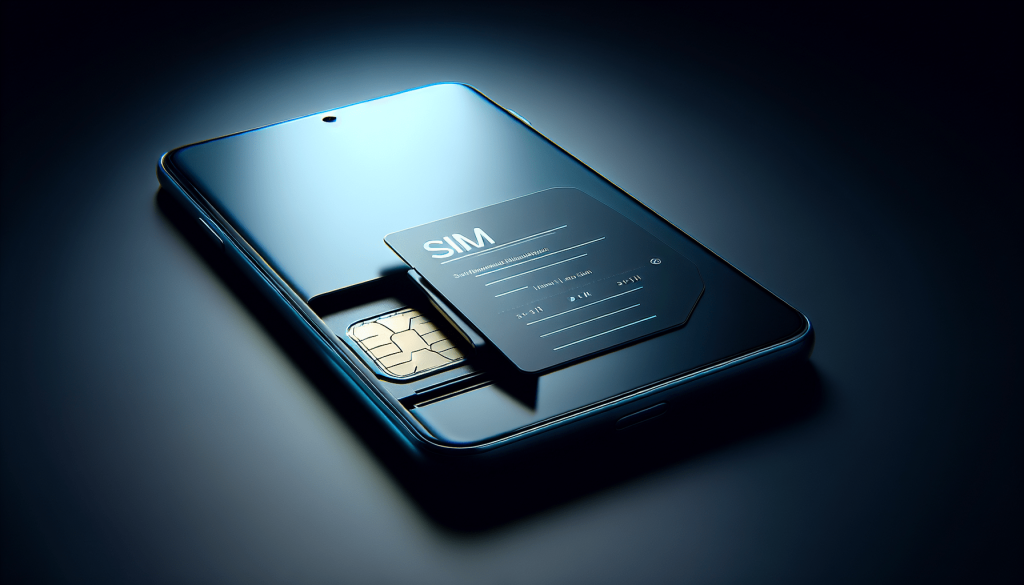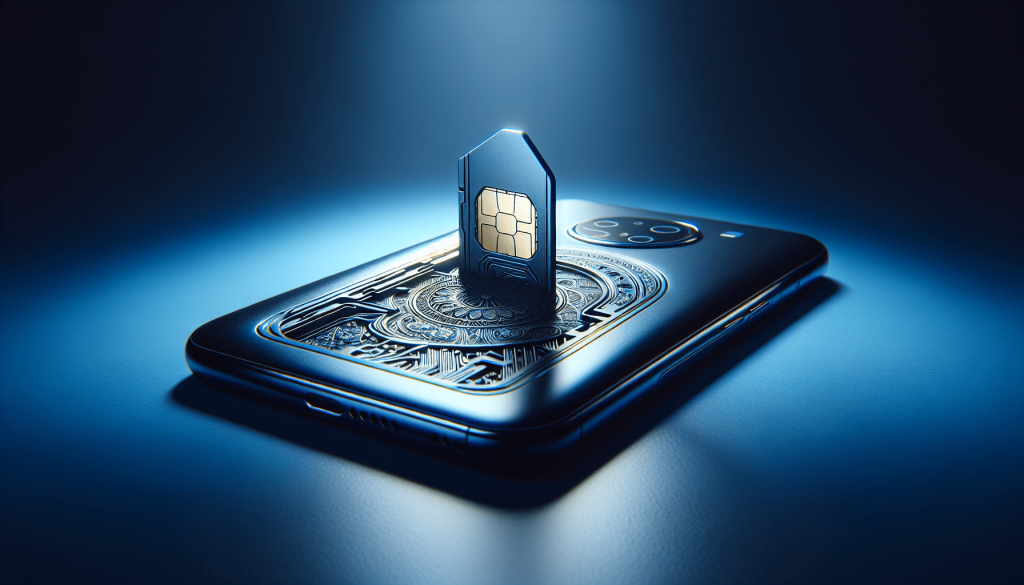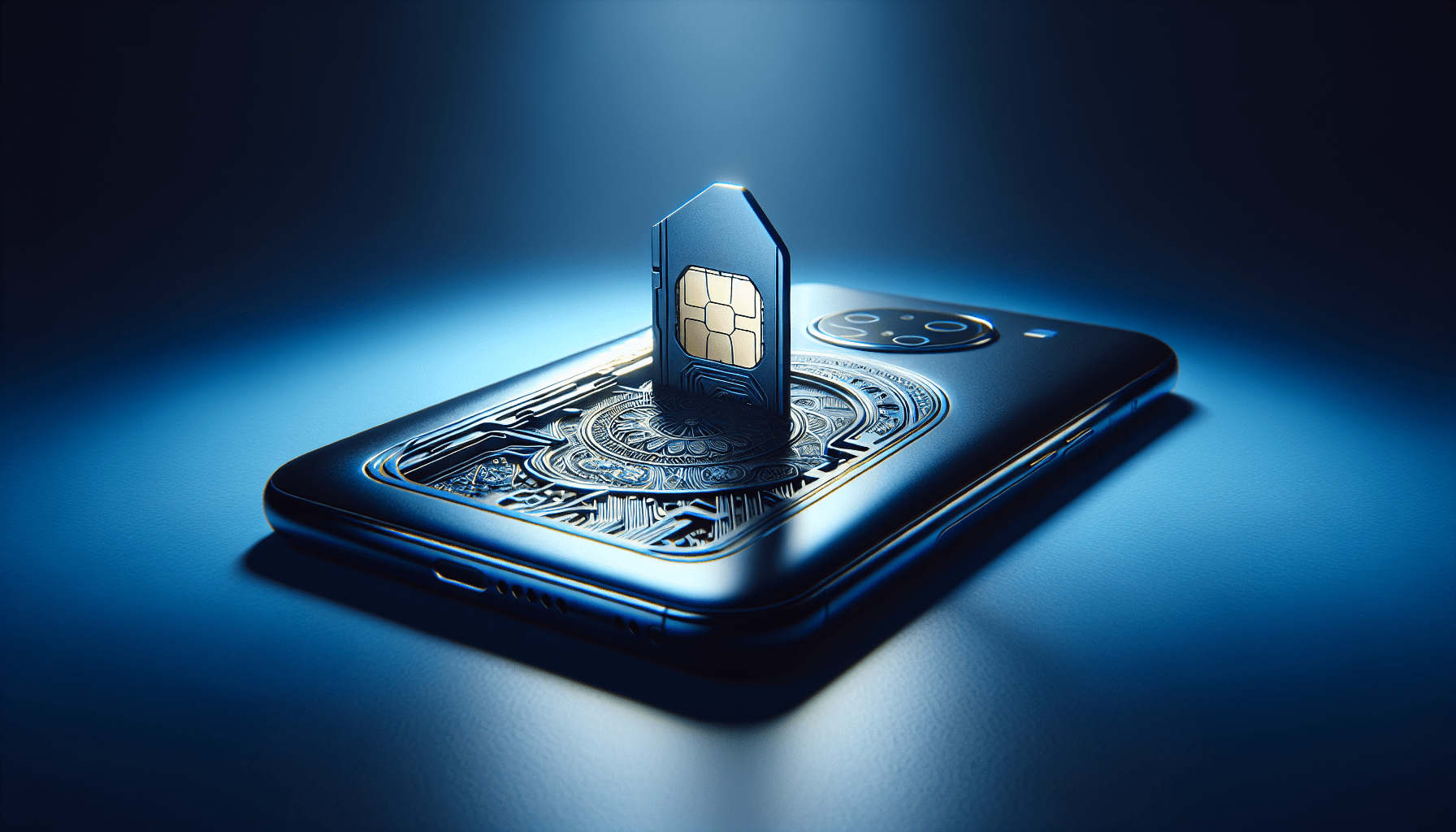In this article, you will discover effective methods to troubleshoot and resolve SIM card error messages that you may encounter on your mobile device. Whether it’s a message indicating a faulty SIM card, a network connectivity issue, or an authentication problem, we will guide you through practical steps to diagnose and overcome these setbacks. By following our expert advice, you can quickly regain access to your mobile network and ensure a seamless communication experience.

Common SIM Card Error Messages
When using a SIM card in your device, you may encounter various error messages that indicate issues with the SIM card or its functionality. Understanding and troubleshooting these error messages can help you resolve the problem and restore your device’s connectivity. Here is a list of common SIM card error messages and how to address them.
No SIM Card Detected
If your device displays a message stating “No SIM Card Detected,” it signifies that your device is unable to recognize the presence of a SIM card. This can be due to physical issues with the SIM card or problems with the device’s SIM card reader.
Invalid SIM Card
An “Invalid SIM Card” error message indicates that the SIM card inserted in your device is not compatible. This might be the case if the SIM card is from another mobile network operator or if the device is locked to a specific network.
SIM Card Registration Failed
When you receive a “SIM Card Registration Failed” error message, it means that your device failed to register the SIM card with the mobile network operator. This can be caused by issues such as network outages, incorrect network settings, or problems with the SIM card itself.
SIM Card Not Provisioned
If your device displays a “SIM Card Not Provisioned” error message, it indicates that the SIM card is either not activated or not fully registered on the mobile network. This can occur when you insert a new SIM card or when there is an issue with the activation process.
Checking for Physical Issues
Before diving into advanced troubleshooting techniques, it’s important to check for any physical issues that may be causing the SIM card error messages. Here are some steps you can take to inspect and clean your SIM card, as well as ensure it is inserted correctly.
Inspecting the SIM Card
Carefully remove the SIM card from your device and inspect it for any visible signs of damage. Look for scratches, cracks, or components that may be out of place. If you notice any physical damage, it is likely the cause of the error message, and you will need to replace the SIM card.
Cleaning the SIM Card
If your SIM card appears clean and undamaged, you can try cleaning it with a soft, lint-free cloth. Gently wipe the gold contacts on the back of the SIM card to remove any dirt or residue that may be affecting its functionality. Avoid using any liquids or abrasive materials for cleaning, as they can damage the SIM card.
Checking the SIM Card Tray
Inspect the SIM card tray in your device for any foreign objects or debris that may be blocking proper contact between the SIM card and the device’s SIM card reader. Remove any obstructions and ensure that the SIM card is securely inserted into the tray without any misalignments or loose connections.
Verifying Network Coverage
If there are no physical issues with your SIM card, the next step is to verify network coverage in your area. Poor network coverage or connectivity issues can sometimes trigger SIM card error messages. Follow these steps to check for network coverage and troubleshoot network-related problems.
Checking Signal Strength
Check the signal strength indicator on your device to determine the quality of the network connection. If the signal strength is weak or fluctuating, it could be the reason behind the SIM card error messages. Try moving to a different location or going outdoors to see if the signal improves.
Contacting Mobile Network Operator
If your device consistently shows weak or no signal even in areas with good network coverage, it is advisable to contact your mobile network operator. They can provide information on any ongoing network issues, perform network diagnostics, and guide you through troubleshooting steps specific to their network.
Testing with Another SIM Card
To rule out any device-specific issues, you can try inserting a different SIM card into your device. If the error messages disappear with the new SIM card, it suggests that there might be an issue with the original SIM card. In this case, contact your mobile network operator for assistance or consider getting a replacement SIM card.

Restarting and Updating Device
Basic device troubleshooting steps like restarting the device and updating its software can often resolve SIM card error messages. Follow these steps to restart your device, update its software, and reset network settings if necessary.
Restarting the Device
Turn off your device completely and wait for a few seconds before turning it back on. This simple process can refresh the device’s settings and resolve temporary software glitches that may be causing the SIM card error messages.
Updating Device Software
Ensure that your device is running the latest software version available. Manufacturers often release software updates that address known issues and improve device compatibility. Check for available updates in your device’s settings and install them if any are available.
Resetting Network Settings
If the SIM card error messages persist, you can try resetting the network settings on your device. This will clear any network-related settings or configurations that may be causing the issue. Go to your device’s settings, find the network or connectivity options, and look for the option to reset network settings.
Unlocking the SIM Card
If you are encountering a SIM card error message related to unlocking or entering PIN codes, follow these steps to resolve the issue.
Entering the Correct PIN
Make sure you are entering the correct PIN code for your SIM card. The PIN code is a security measure designed to protect your SIM card from unauthorized access. If you enter an incorrect PIN code multiple times, your SIM card can become locked, resulting in SIM card error messages. Refer to your SIM card documentation or contact your mobile network operator for the correct PIN code.
Unlocking PUK Code
If you have exceeded the maximum number of allowed PIN attempts, your SIM card might ask for a PUK (Personal Unblocking Key) code. The PUK code can be obtained by contacting your mobile network operator’s customer support. Enter the PUK code when prompted to unlock your SIM card. Be cautious when entering the PUK code, as entering it incorrectly multiple times can permanently lock your SIM card.
Contacting Mobile Network Operator for Assistance
If you are unable to unlock your SIM card or resolve the SIM card error messages on your own, it is recommended to contact your mobile network operator’s technical support. They can provide guidance specific to your network and device, assist with unlocking the SIM card, or initiate any necessary troubleshooting steps.
Ensuring Proper SIM Card Insertion
Properly inserting the SIM card into your device is crucial for it to function correctly. Follow these steps to ensure that the SIM card is inserted correctly and aligned properly.
Removing and Reinserting the SIM Card
Turn off your device and locate the SIM card tray or removable back panel. Use the appropriate tool or your fingernail to remove the SIM card from the tray or slot. Inspect the SIM card for any damage or misalignments, and then reinsert it back into the tray making sure it is securely seated.
Checking for Proper Alignment
When inserting the SIM card, ensure that it is aligned with the SIM card slot or tray. Most devices have guides or notches that help you align the SIM card correctly. Align the cut-corner of the SIM card with the appropriate cut-corner shape on the tray and gently slide it in until it clicks into place.
Using SIM Card Adapter Correctly
If you are using a nano-SIM card with a device that requires a micro-SIM or standard SIM card, ensure that you are using the correct SIM card adapter. Follow the manufacturer’s instructions and insert the nano-SIM into the adapter, then insert the adapter into the device. Be careful not to damage the SIM card or adapter during the process.
Resolving Software Issues
Sometimes, SIM card error messages can be caused by software-related issues on your device. Follow these steps to troubleshoot and resolve any software problems that may be affecting your SIM card’s functionality.
Clearing SIM Card Cache
Clearing the cache for the SIM card can help resolve software conflicts and improve its performance. Go to your device’s settings, find the application or storage settings, locate the SIM card options, and select the option to clear the SIM card cache.
Resetting APN Settings
The Access Point Name (APN) settings on your device determine how it connects to the mobile network. Resetting the APN settings to their default values can resolve compatibility issues that may be causing SIM card error messages. Go to your device’s settings, find the network or connectivity options, locate the APN settings, and choose the option to reset them to default.
Verifying SIM Card Compatibility
Ensure that your device is compatible with the type of SIM card you are using. Different devices support different types of SIM cards such as nano-SIM, micro-SIM, or standard SIM. Using an incompatible SIM card can result in SIM card error messages. Refer to your device’s manual or contact the manufacturer for information on the supported SIM card types.
Checking for Damaged SIM Card
If you have gone through the troubleshooting steps and the SIM card error messages persist, it is possible that your SIM card is physically damaged. Here’s how you can check for and address a damaged SIM card.
Inspecting for Physical Damage
Carefully inspect the SIM card for any physical damage, such as visible cracks, scratches, or bent contacts. If you notice any signs of damage, it is likely that the SIM card needs to be replaced. Contact your mobile network operator to request a replacement SIM card.
Replace SIM Card
If you have determined that your SIM card is indeed damaged, the best course of action is to obtain a replacement SIM card from your mobile network operator. They will provide you with a new SIM card that you can activate and insert into your device. Make sure to follow the activation process provided by your mobile network operator to ensure a smooth transition to the new SIM card.
Contacting Technical Support
If you have exhausted all troubleshooting options and continue to experience SIM card error messages, it is recommended to reach out to technical support for further assistance. Here are two potential avenues to explore.
Reaching Out to Device Manufacturer
If the SIM card error messages persist and you suspect a device-specific issue, you can contact the manufacturer for support. Provide them with detailed information about the error messages, the troubleshooting steps you have already attempted, and any relevant device details. The manufacturer’s technical support team can guide you through additional troubleshooting steps or advise on potential repairs or replacements.
Contacting Mobile Network Operator
If the SIM card error messages are related to network issues or SIM card compatibility, it is advisable to contact your mobile network operator’s technical support. They have specialized knowledge of their network systems and can assist in identifying and resolving the issue. Provide them with detailed information about the error messages and the troubleshooting steps you have taken to help them understand the problem better.
Additional Troubleshooting Steps
In some cases, advanced troubleshooting steps may be necessary to resolve persistent SIM card error messages. Here are additional steps you can try if the previous methods did not resolve the issue.
Performing Factory Reset
Performing a factory reset on your device can help eliminate any software-related issues that may be causing the SIM card error messages. Keep in mind that a factory reset will erase all data and settings on your device, so make sure to back up your important information before proceeding. Consult your device’s manual or the manufacturer’s website for instructions on performing a factory reset.
Testing SIM Card on Another Device
To further isolate the issue, you can try inserting the SIM card into another compatible device. If the SIM card works without any error messages in the alternative device, it suggests that there may be a problem with the original device’s SIM card reader or software. You can then focus on troubleshooting or repairing the original device accordingly.
By following these troubleshooting steps, you can address common SIM card error messages and restore connectivity to your device. Remember to always consult the device’s manual and contact the relevant technical support teams for further assistance when needed.
